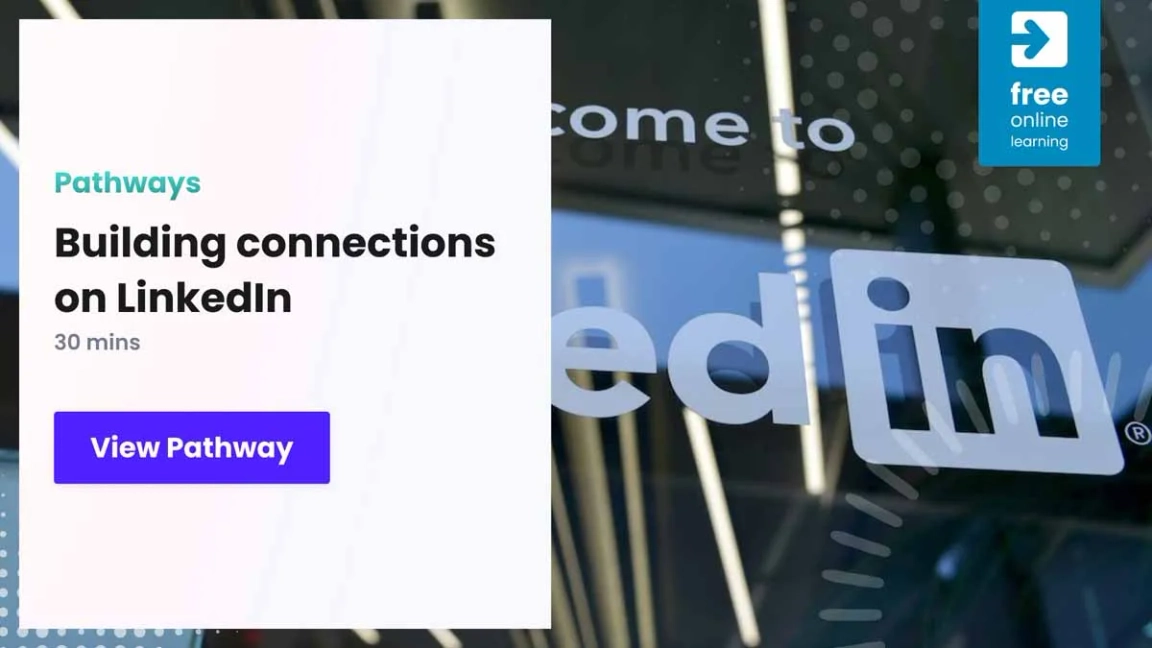Careers advice and planning
How to use LinkedIn to get a job
21 Jun 2023, 15:38
LinkedIn is an essential tool for students and graduates applying for jobs; it’s not just a professional networking platform for people in work. Here’s how to use LinkedIn effectively.

The most ‘switched-on’ job-seeking graduates are actively using LinkedIn to network, to gain useful careers advice, to find jobs and internships and to make better applications.
We have spoken to experts to discover how you can make the most of LinkedIn to boost your chances of getting a graduate job.
Read on to discover:
- ways you can get a job using LinkedIn
- how to network on LinkedIn: finding and adding connections and building ongoing relationships
- what to post
- what’s the best time to post on LinkedIn
- how to use LinkedIn to research employers for applications and interviews
- how to apply for jobs via LinkedIn
This is part two of our guide to using LinkedIn effectively – go to part one to learn how to create the perfect LinkedIn profile.
Getting a job via LinkedIn: who are our experts?
Karl Watson is a client account director at GTI Recruiting Solutions, a recruitment outsourcing company owned by the same parent company as targetjobs, which hires graduates on behalf of employers.
Joanne Eaton, the careers team leader at the University of Hertfordshire, advises students on all aspects of their post-university job hunt.
Ashley Dunsmore is a senior quantity surveyor at Kier who first used LinkedIn as a student. It was through LinkedIn that she built a network from scratch, gained work experience for her CV and was approached for a graduate job with Kier. Read on for more of her story or jump down to watch our interview with Ashley.
So, is it possible to get a job using LinkedIn? How?
Yes, it is possible, through:
- being head-hunted
- applying through LinkedIn
- networking.
1. Being head-hunted
Karl has made job offers to candidates that he first approached on LinkedIn. However, he points out that being contacted via LinkedIn won’t happen for all types of vacancies. ‘Companies with large graduate schemes that receive hundreds of applications probably won’t be using LinkedIn to find candidates. However, if an employer has an individual vacancy (particularly if it is in a niche area or requires a specific degree background), the recruiter might do,’ he says. ‘For example, if I were seeking a food scientist in a particular location, I would search for candidates according to their degree background and likely location.’
With a premium account, he can send an InMail message. ‘If head hunting, I’d approach candidates to introduce myself, to say that I am hiring for such and such a position and ask them to get in touch if they were interested,’ he continues. ‘Candidates do have to be wary of scams. Genuine recruiters never ask for personal information up front or for bank details. I encourage you to review the recruiter’s profile and do some online research on the company they work for before engaging.’
2. Applying through LinkedIn
You can also apply for some jobs directly through LinkedIn, though we would always suggest you search targetjobs first to view both graduate programmes and individual entry-level vacancies.
3. Growing your network
Ashley’s job-hunting success came more from hearing of opportunities through proactive networking. Through LinkedIn, she ultimately got a place on a Royal Institution of Chartered Surveyors training day (great for networking), had her CV reviewed by professionals in the field and was recommended for a surveying placement. She got an interview because one of her LinkedIn connections was asked by one of their LinkedIn connections if they knew of anyone who would be a good candidate. She was later contacted on LinkedIn to see if she’d like to apply for a graduate surveying job with Kier.
Using LinkedIn to network: find connections
The core of LinkedIn is building up your ‘connections’ – people who accept you as contacts on LinkedIn. You send a ‘connection invite’, which the other person can accept or decline. LinkedIn occasionally tweaks its permissions about who a person can connect with. You will always be able to connect with people it deems to be in your wider network, which includes:
- connections of connections (called 2nd degree connections)
- people LinkedIn suggests based on your academic or employment history
- contacts that you import from your email address book
- people who are in the same LinkedIn groups as you.
However, you may also be able to connect with people you don't know, depending on LinkedIn's permissions. You may be encouraged to send an introductory message before a connection request or you may be able to do what Ashley did and just search for and connect with anyone related to your career choice.
Karl advises that you start building your LinkedIn network by adding your friends, family and course mates, along with academics and tutors you feel close to (especially those who have links to industry) and careers advisers. You never know with whom they are connected, which might open opportunities for you.
If you’re attending a careers fair or a networking event, you can ask people whether you can connect with them on LinkedIn. Make sure there’s a concrete reason for the request: maybe you have more questions you’d like to ask or you'd like to find out more about vacancies at their employer. If professionals are unable to, or are unwilling to, connect with you, they might direct you towards relevant groups that you can join instead.
Using LinkedIn to network: join groups
LinkedIn groups are places where like-minded professionals can share resources and have discussions. Joining groups is an instant way of expanding your network. Even if they are not ‘in your network’, you will be able to view the full profile of, and send connection requests to, people who are members of the same groups as you. Your university will likely have at least one group for students and/or alumni, which is a good place to start
Look out for groups related to the sector, job role or employer that you’re interested in. If you become a student member of a professional body – for example, in accountancy, engineering or surveying – you will be able to join their LinkedIn groups. Many have groups for their individual branches.
If you attend a recruitment event, you may well be invited to join groups for current and previous attendees – the events team from targetjobs will invite previous attendees to private groups.
Using LinkedIn to network: personalise your connection request
‘Sending the default message is a bit poor; it looks like spam,’ says Karl. ‘Unless it is for family and friends, create your own message. Include a little bit about yourself and your background and research that person so you can connect with their interests.’
Karl responds well to approaches along the lines of: ‘I have just graduated with a degree in [subject] from [name of university] and I wish to begin my career in [sector]. I notice you are working on the recruitment team for X and it would be great to connect with you in case any relevant opportunities come up.’
Ashley’s advice, particularly when connecting with professionals working within the industry, is to never start by asking for a job or internship. ‘I’d look at their profile and see what their journey was to get where they are now, and then maybe pick one or two items off their journey that I liked the look of and ask them about that,’ Ashley says of her approach. ‘You can say, “I've had a look at your page; I really like the route that you've taken to where you are now. I'm just starting out in my career; I would really like to do X, Y, and Z. It would be great to connect with you and potentially ask you a few questions, if you'd be OK with that.”’
Using LinkedIn to network: be confident that you won’t be a bother
It’s totally understandable if you are nervous about bothering people. But the worst they can do is ‘ignore’ or ‘dismiss’ your request; you haven’t lost anything and you may not even be aware of it. If people didn’t reply to Ashley, she just moved on. But she stresses that everyone she did connect with was super helpful, so it is worth giving it a go. Plus, as Karl says, 'The reason that many professionals go on LinkedIn is to expand their network.'
Use your judgement when sending connection requests; if someone has thousands of connections and is an active LinkedIn user, they probably won’t mind adding you to their network, but it they have a bare-bones profile and 20 connections, don’t expect them to respond quickly or favourably. Joanne says, ‘You’re dealing with people at the end of the day. Everybody does things differently, so the crux of it all is being professional.’
Using LinkedIn to network: Build an ongoing relationship
Once you have connected, it is essential to build an ongoing relationship. While you can and should continue a dialogue whereby you ask them questions, you can also show an active interest by liking or commenting on their posts. If you know they are working on an interesting project, message them from time to time to see how it is going.
What to post on LinkedIn
Your activity on LinkedIn – what you post, the pages you follow, how you react to other people’s posts – can give insights into your professional interests and motivations. So, it would be a wasted opportunity for you not to create your own posts and comment on other people’s.
What do you post? You could:
- post about a book or article you’ve read about the profession or industry that interests you, saying what you thought of it
- post about webinars, saying what you found interesting about it
- post about any work and voluntary experience you are undertaking and what skills you’ve learned
- post about an interesting piece of work you’ve undertaken on your course
- share a company’s post if it has done something that interests you, adding a comment of your own
- comment on a connection’s post.
‘Whenever you post, ask yourself “so what?”,’ advises Karl. ‘What does a post say about you in a professional sense? Does it reveal your interest in the profession or industry? Does it show how you’ve developed skills or share your achievements?’
When to post on LinkedIn
For maximum effect, time your posts for when most people will see them: just before and after office hours and during lunch.
Dedicate time to using the service early on in order to start building up your network. 'What other social media are you using?’ asks Joanne. ‘Take ten minutes off and direct that towards LinkedIn. The more you use it, the more you’ll understand and gain from it.’
How to use LinkedIn to research job applications and interviews
Recruiters will expect you to have researched the organisation you are applying to and for this research to inform your other application and interview answers. ‘That search bar in the top left is gold dust and students don’t realise how much they can learn about a company by using that,’ explains Joanne. ‘Not using LinkedIn for research is a major error. If you put a company in that search bar, you can find people, jobs, the content companies put out, information and even groups related to the company.’
Each employer will likely have its own LinkedIn pages where it will post content and news. This page gives you a chance to examine how the organisation views itself and to keep up to date with the current issues and topics that it is interested in. You can compare this with the LinkedIn profiles of other companies in the same sector: use it to discover what differentiates the organisation you are applying to from the competition.
What should you find out about an employer before applying? Read our article on researching employers to find out.
Talking to someone who already works at the organisation, whether it’s via a one-to-one message, in person or as part of a group discussion, is a great way to find out about its culture, its values and what it’s really like to work there. As well as helping you in your applications, this research can also confirm whether this job is the right opportunity for you.
How to apply for jobs via LinkedIn
When applying via LinkedIn, most information will be taken automatically from your profile (you can amend it). The employer can also ask you to upload a CV and sometimes, in a separate field, a covering letter. If you aren’t explicitly asked for a covering letter, you do not have to supply one along with your CV. Instead, at the top of your CV include a personal statement that is tailored to the company, one that briefly explains why you are interested in the role and why you would be a good hire. We don’t usually advise including a personal statement on a graduate CV, but this is one time when we make an exception.
Ashley's story: how one student found a job via LinkedIn
Watch our video to discover how Ashley cultivated a network from scratch that enabled her to get work experience and a job.
Ashley Dunsmore is interviewed about her experience of using LinkedIn to get a job.
targetjobs Editorial advice
This describes editorially independent and impartial content, which has been written and edited by the targetjobs content team. Any external contributors featuring in the article are in line with our non-advertorial policy, by which we mean that we do not promote one organisation over another.





